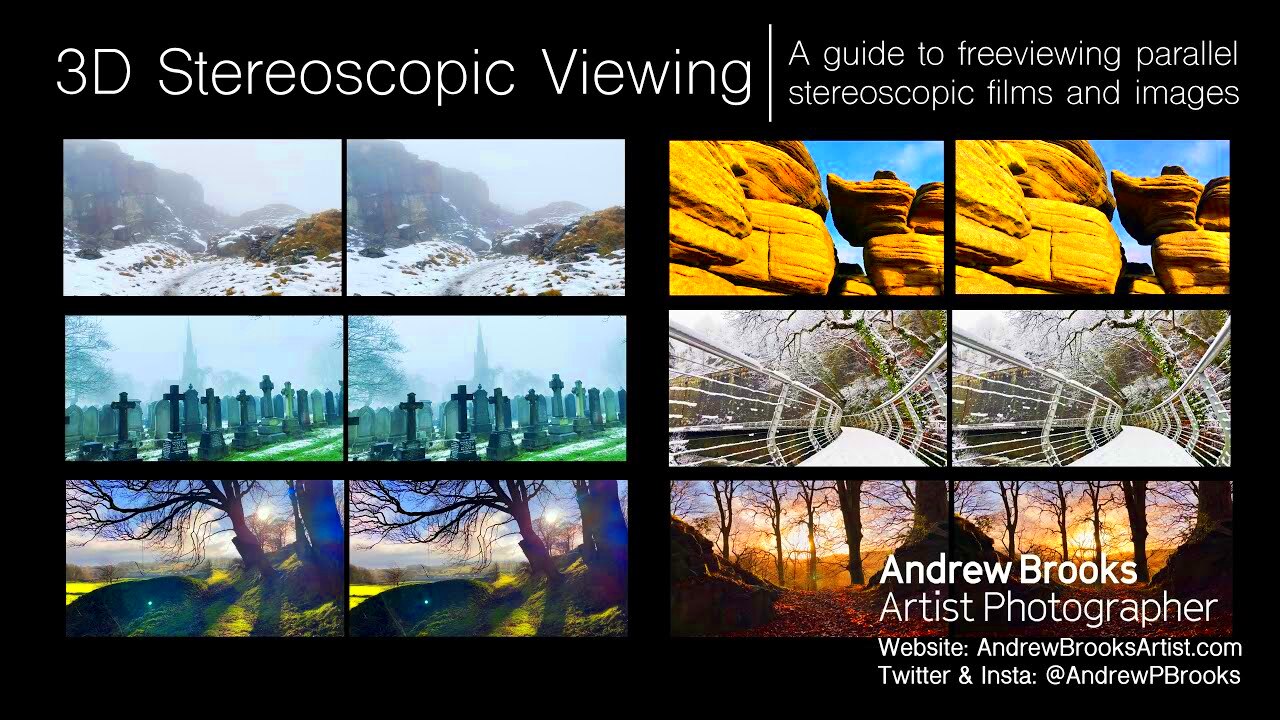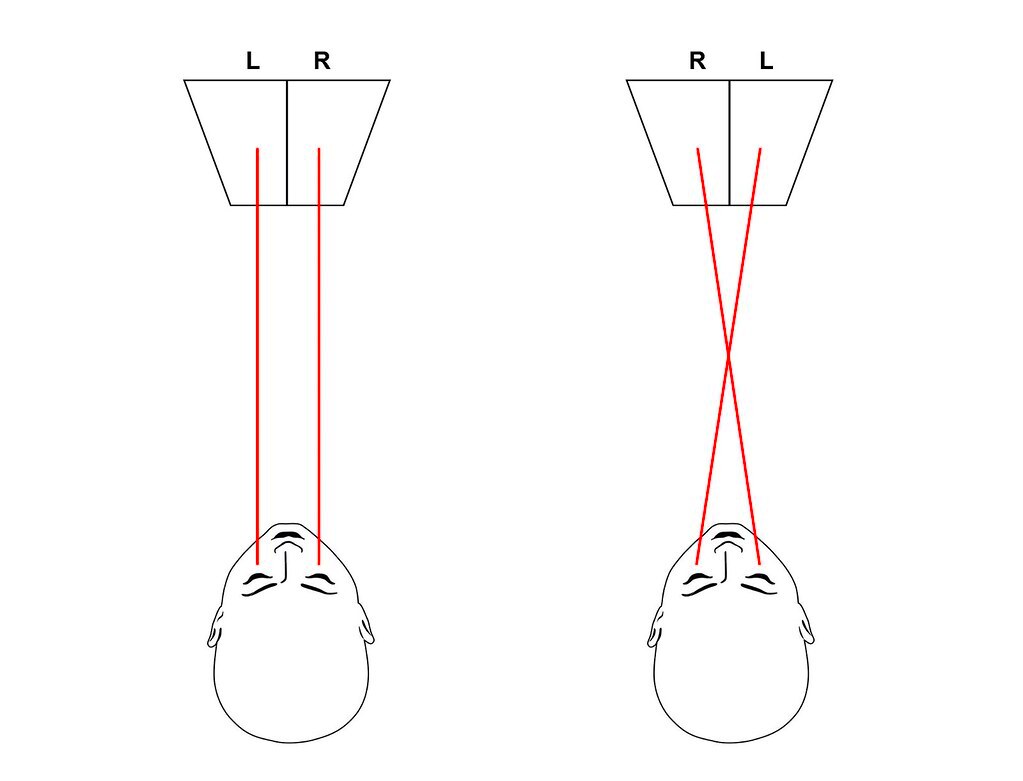Stereo images, also known as 3D images, give the illusion of depth and allow viewers to see objects as if they were three-dimensional. These images are created by capturing two slightly different perspectives of a scene—one from the left eye's perspective and the other from the right. When viewed correctly, the brain combines the two images to create a perception of depth.
The concept behind stereo images is rooted in how our eyes work. Each eye sees the world from a slightly different angle, and the brain processes these two images to create a sense of depth. Stereo images take advantage of this natural phenomenon to simulate 3D vision using just two flat images.
For stereo images to work effectively, the two images need to be aligned in a specific way. Small differences between the left and right images simulate the natural distance between your eyes. This depth effect is what makes stereo images appear so lifelike. To view these images, specialized tools like 3D glasses or VR headsets can enhance the experience, but there are also simpler ways to enjoy them without extra equipment.
Understanding the Basics of Stereo Photography

Stereo photography is the art of creating 3D images using two photographs taken from slightly different angles. The goal is to replicate the way our eyes naturally view the world, providing depth perception and creating a realistic, three-dimensional effect. The two images are taken from positions that mimic the distance between our eyes, typically around 2.5 inches (6.3 cm).
Here are some important concepts to understand about stereo photography:
- Convergence: The alignment of the two images so that the viewer’s brain interprets them as a 3D scene.
- Interocular Distance: The distance between the two cameras used in stereo photography, which impacts the depth of the 3D effect.
- Cross-eyed and Parallel Viewing: Two common methods for viewing stereo images, where you either cross your eyes to merge the images or adjust them to align in parallel.
To create these images, a stereo camera setup or two separate cameras mounted side by side can be used. These setups allow the photographer to capture two slightly different views, which when combined, create the stereoscopic effect.
How to View Stereo Images Without Special Equipment
If you don’t have access to 3D glasses or other special viewing equipment, don’t worry! There are several simple ways to enjoy stereo images without any additional tools. Here are some common methods:
- Cross-eyed Viewing: This method involves crossing your eyes to merge the left and right images. Start by focusing on the center of the image and slowly bring your eyes inward. With practice, you’ll begin to see the 3D effect.
- Parallel Viewing: With this method, you place the images side by side and focus on the space between them. This allows your eyes to view each image with a slight divergence, creating the depth effect.
- Stereo Viewer Apps: Some smartphone apps let you view stereo images in 3D by simply tapping your phone screen. These apps simulate the experience without requiring any extra equipment.
Additionally, websites like Imgflip allow you to create and download stereo images, which you can view directly on your screen. While it may take a bit of practice to get used to these techniques, it’s a fun and accessible way to experience stereo photography.
Using Imgflip Downloader to Access Stereo Images
Imgflip Downloader is a powerful tool that lets you easily access and download stereo images from the Imgflip website. Whether you're looking to save 3D images for personal use or need them for a project, Imgflip provides a straightforward way to grab them. With just a few clicks, you can download high-quality stereo images directly to your device.
Here’s how to use Imgflip Downloader:
- Visit Imgflip: Head over to the Imgflip website where you’ll find a variety of stereo images, including user-generated and featured 3D content.
- Select the Image: Browse the collection of stereo images and select the one you want to download. You can also search for specific 3D images using keywords.
- Download the Image: Once you’ve selected an image, click on the download button. Imgflip will provide you with different file formats, depending on the image type.
One of the best things about using Imgflip Downloader is that it lets you download stereo images in various sizes, so you can choose the best one for your needs. Whether you're creating content for your website, blog, or just want to keep a collection of 3D images, Imgflip makes it easy to access these visuals with minimal hassle.
Steps to Upload and Create Stereo Images on Imgflip
Creating and uploading stereo images on Imgflip is a great way to share your 3D creations with others. With a few simple steps, you can easily create and upload your own stereo images for others to enjoy. Here’s how you can do it:
- Step 1: Sign Up or Log In – Before you begin, you need an Imgflip account. Sign up or log in to your existing account to start creating and uploading images.
- Step 2: Prepare Your Images – Capture two images of the same scene from slightly different angles, simulating the way our eyes view the world. The images should be aligned correctly to create a realistic 3D effect.
- Step 3: Use Imgflip’s Tools – Imgflip offers various tools to help you combine and manipulate the stereo images. You can adjust the alignment, spacing, and even add text or other elements to make your image more engaging.
- Step 4: Upload the Image – Once your stereo image is ready, click on the upload button. Imgflip will guide you through the process, allowing you to add a description and tags for easier discovery by other users.
- Step 5: Share Your Creation – After uploading, you can share your stereo image directly on social media or use the provided link to embed it on websites or blogs.
Imgflip makes it incredibly easy to share your own 3D images with the world. Whether you're creating them for fun or for a more professional project, the platform provides a simple yet effective way to showcase your work.
Common Mistakes to Avoid When Viewing Stereo Images
While viewing stereo images can be a fun and immersive experience, it’s important to avoid a few common mistakes to ensure you get the best 3D effect. Here are some things to watch out for:
- Incorrect Viewing Distance: One of the most common issues is not holding the images at the right distance. If you’re using the cross-eyed method, make sure your eyes are relaxed and not too close to the screen. For parallel viewing, the images should be at a comfortable distance where your eyes can focus on them without straining.
- Misalignment of Images: If the two images aren’t aligned properly, the 3D effect will be distorted. When creating or viewing stereo images, make sure the left and right images are positioned correctly for a smooth viewing experience.
- Not Allowing Time to Adjust: It may take some time for your eyes to adjust when using the cross-eyed method, or when focusing on stereo images for long periods. If you experience discomfort or strain, take breaks and give your eyes time to relax.
- Too Much Depth: If the interocular distance (the space between the two images) is too large, the image may become difficult to view. Try reducing the depth if you find the image too overwhelming or blurry.
- Inconsistent Lighting: Poor lighting can make stereo images harder to view. Make sure you have enough light in the room and that your screen is visible without glare or reflections.
Avoiding these common mistakes will help you get the most out of your stereo image experience. With a little practice and attention to detail, you’ll be able to enjoy high-quality 3D images with ease!
Enhancing Your Stereo Image Viewing Experience
Viewing stereo images can be an exciting experience, but there are ways to make it even better. Whether you are using a phone, computer, or special viewing device, small adjustments can significantly improve the depth and clarity of your 3D images. Here are some tips for enhancing your viewing experience:
- Adjust the Viewing Distance: The right distance between you and the screen is crucial. If you’re using the cross-eyed method, sit far enough back to avoid straining your eyes. For parallel viewing, try to maintain a distance where both images appear clearly focused.
- Increase Image Size: If possible, view stereo images on a larger screen. A bigger display helps you see the depth better, making the 3D effect more pronounced.
- Use High-Resolution Images: The clearer the image, the better the 3D effect. Higher resolution images contain more detail, which can make the stereo effect more convincing.
- Lighting and Screen Brightness: Ensure the room is adequately lit, and adjust your screen brightness to avoid glare. Proper lighting prevents eye strain and helps you focus on the 3D details.
- Use Specialized Viewers: If you have access to 3D glasses or a VR headset, these tools can amplify the stereo effect, providing a more immersive experience.
Making these small adjustments can transform your viewing experience, making stereo images even more lifelike and enjoyable. Whether you’re using Imgflip or other platforms, taking the time to set up your environment for optimal viewing will help you appreciate the beauty of 3D photography.
FAQ
Here are some frequently asked questions about stereo images and how to view them:
- What are stereo images? Stereo images are photographs taken from two slightly different angles, simulating the way our eyes naturally perceive depth. When viewed correctly, they create a 3D effect.
- Can I view stereo images without special equipment? Yes! You can view stereo images without special glasses or equipment using methods like cross-eyed viewing or parallel viewing.
- How do I create stereo images? To create stereo images, take two photographs of the same scene from slightly different angles. These images are then combined to create a 3D effect.
- Is there a way to enhance the viewing experience? Yes! Adjust the distance between you and the screen, use high-resolution images, and experiment with lighting and brightness settings to improve the 3D effect.
- What tools can I use to view stereo images? You can view stereo images using your computer, phone, or specialized equipment like 3D glasses or VR headsets. Many apps and websites also offer tools to help you enjoy these images.
Conclusion
Stereo images offer a unique way to experience photography by adding depth and dimension. While viewing these images can be as simple as using your eyes, following best practices can elevate the experience and make it more immersive. Whether you’re using Imgflip Downloader to access images or creating your own, enhancing your setup and understanding how to view stereo images properly will help you appreciate the beauty of 3D photography. With a little practice and attention to detail, you can enjoy stereo images in a way that feels as real as the world around you.
By following these tips, you’ll soon become an expert in viewing and creating stereo images, making your experience even more rewarding. Happy viewing!

 admin
admin








